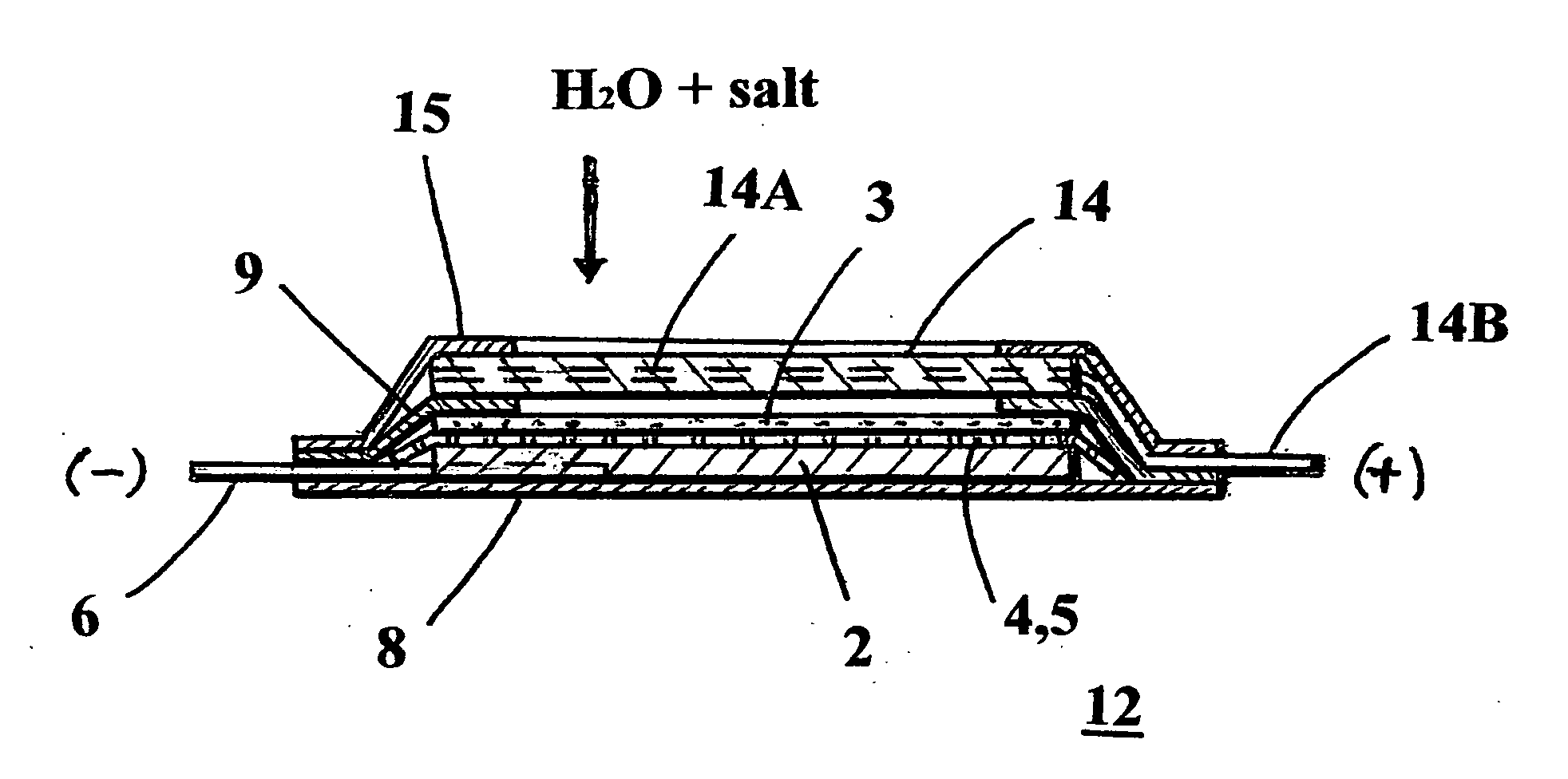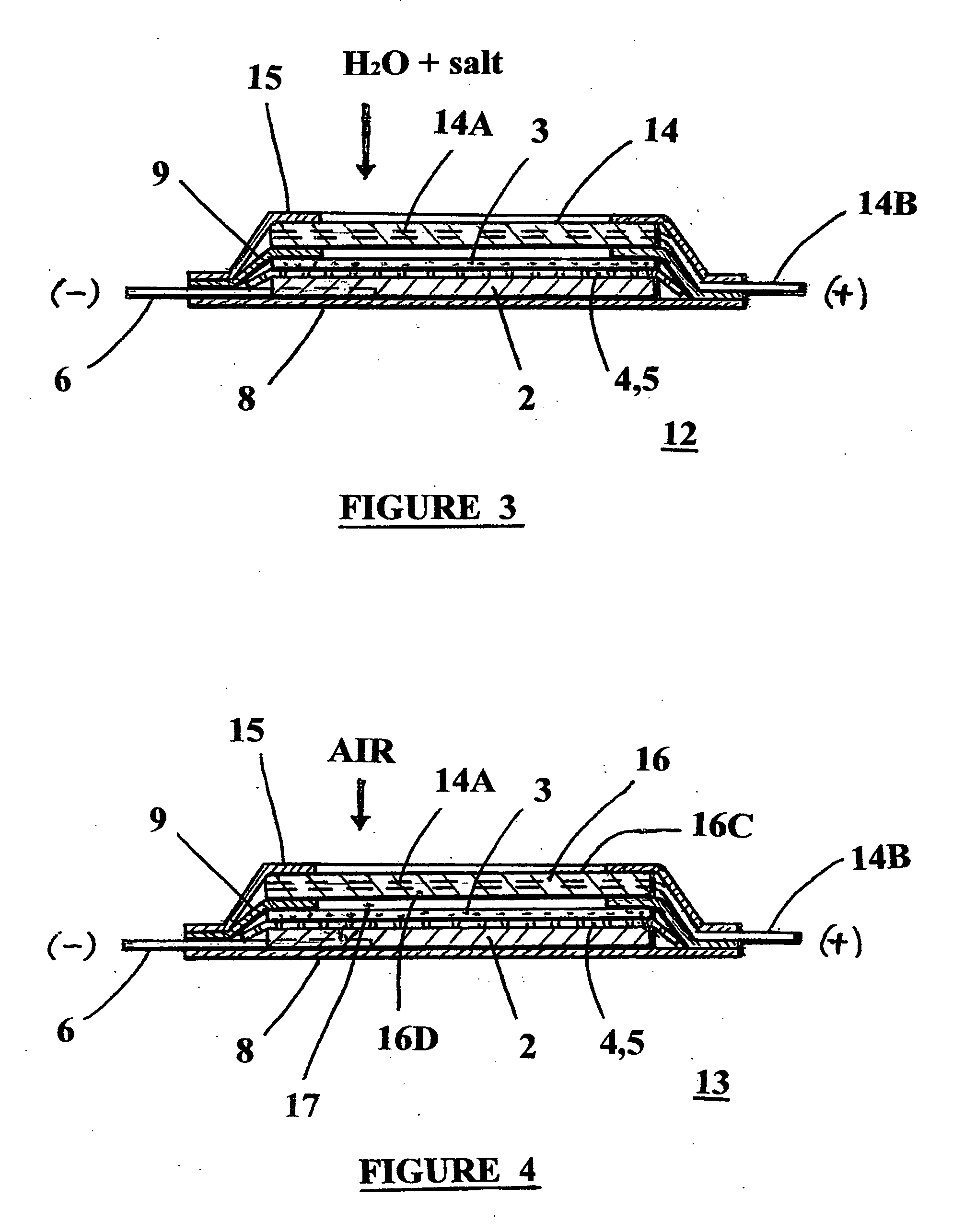Lithium metal anode construction for seawater or air semi-fuel cells having flexible pouch packaging
a technology of lithium metal anode and semi-fuel cell, which is applied in the direction of cell components, cell components, jackets/cases materials, etc., can solve the problems of limited prior art cell sizes, lithium-air batteries do not utilize their full potential in energy density, and the limitations of relatively shallow depths of underwater lithium batteries, etc., to achieve higher water pressure and higher water pressure
- Summary
- Abstract
- Description
- Claims
- Application Information
AI Technical Summary
Benefits of technology
Problems solved by technology
Method used
Image
Examples
Embodiment Construction
[0034]When referring to the preferred embodiments, certain terminology will be utilized for the sake of clarity. Use of such terminology is intended to encompass not only the described embodiment, but also all technical equivalents which operate and function in substantially the same way to bring about the same results.
[0035]Lithium-seawater and lithium-air anodes usually comprise a lithium foil protected by a hard, moisture impermeable and sealed structure, which has on the active side ion conductive layers facing the cathode. The surrounding medium, such as seawater, or oxygen in air enters the porous cathode layer and results in an open circuit potential slightly higher than 3 volts against lithium.
[0036]Present invention employs new and novel anode packaging structure, which utilizes a compliant, flexible pouch enclosure heat welded to a glass-ceramic ion conductive layer facing the cathode, which provides for cell operation in greater depth of the ocean and also results in high...
PUM
 Login to View More
Login to View More Abstract
Description
Claims
Application Information
 Login to View More
Login to View More - R&D
- Intellectual Property
- Life Sciences
- Materials
- Tech Scout
- Unparalleled Data Quality
- Higher Quality Content
- 60% Fewer Hallucinations
Browse by: Latest US Patents, China's latest patents, Technical Efficacy Thesaurus, Application Domain, Technology Topic, Popular Technical Reports.
© 2025 PatSnap. All rights reserved.Legal|Privacy policy|Modern Slavery Act Transparency Statement|Sitemap|About US| Contact US: help@patsnap.com



